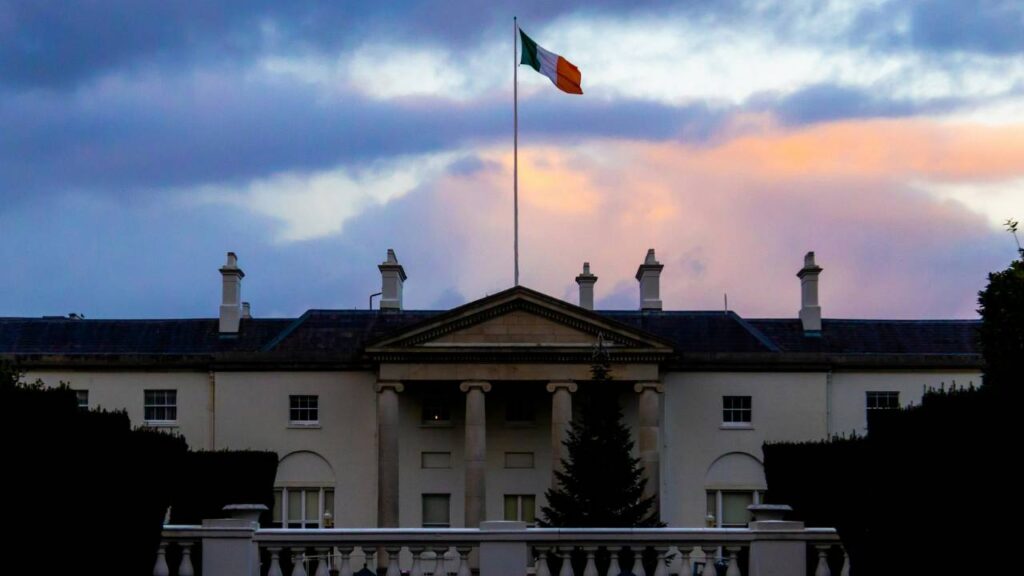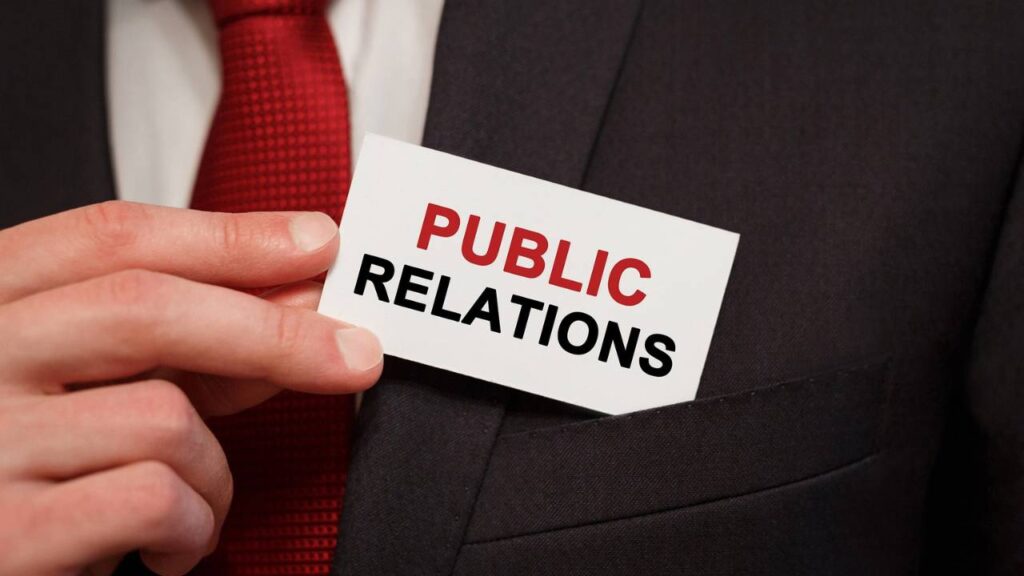In today’s competitive marketplace, the image of your company is crucial. Effective public relations (PR) help build trust and enhance your reputation. With various PR strategies, you can boost brand awareness and ensure that your business stands out in the crowd.
Event management, media relations, and crisis communication are just a few types of PR that are vital for maintaining a positive image. Each type addresses different aspects of public perception and can make a significant impact on how your brand is viewed by the public.
By understanding and utilising these different PR methods, you can create a well-rounded approach to building and maintaining a strong, positive reputation. Your brand’s credibility and customer trust hinge on how effectively you manage public relations.
Understanding Public Relations
Public Relations (PR) is a strategic communication process that builds mutually beneficial relationships between organisations and their publics. It involves managing and distributing information to promote a positive image.
Defining PR and Its Objectives
Public Relations is more than just managing media relations; it’s about creating and maintaining a positive image and strong relationships with various stakeholders. The main objectives of PR include:
- Building trust and credibility
- Enhancing reputation
- Fostering goodwill among the public
These objectives aim to ensure that the organisation is viewed favourably. PR activities such as press releases, social media engagement, and community involvement play a key role. By achieving these objectives, you help your organisation stand out and build lasting connections.
The PR Professional: Roles and Responsibilities
As a PR professional, your role is multifaceted. You work on crafting messages that resonate with the targeted audience. Key responsibilities include:
- Creating press releases and media kits
- Managing media relationships
- Organising events and press conferences
You also handle crisis communication, where your role is to manage and mitigate negative publicity. Engaging with different stakeholders and maintaining open lines of communication is critical. You are the custodian of the organisation’s image, ensuring all communications reflect the organisation’s values and objectives.
Media and Press Relations

Effective media and press relations can amplify your message, enhance brand awareness, and secure valuable earned media. Building genuine relationships with journalists and media outlets is crucial for successful media engagement.
Crafting a Compelling Press Release
Crafting a press release involves clear, concise, and engaging writing. Start with a strong headline that captures attention. Your first paragraph should answer the essential questions: who, what, when, where, why, and how.
Include quotes from key stakeholders to add credibility and human interest. Ensure your press release is free of jargon and easy to understand. Finally, provide contact information for follow-ups and high-quality images if relevant.
Engaging Journalists and Media Outlets
Engaging with journalists and media outlets requires a targeted approach. Identify the journalists who cover topics related to your field. Personalise your communications to show you’ve done your research.
Build relationships by providing valuable information and being responsive. Use social media to connect and maintain visibility. Consider hosting news conferences or events to bring your story to life and offer journalists exclusive access.
Strategies for Media Attention and Earned Media
Gain media attention by pitching unique and newsworthy stories. Understand what makes a story compelling to a journalist’s audience. Use data and trends to support your narrative.
Regularly update your media list to ensure you are reaching the right contacts. Leverage social media to boost your story’s visibility and encourage journalists to cover it. Additionally, follow up politely after sending a press release to keep your story in the spotlight.
The Digital Frontier
The digital world has transformed public relations by providing platforms for real-time engagement and broader outreach. Key areas include leveraging social media, effective use of blogs, and a focus on digital marketing for organic visibility.
Social Media PR and Online Presence
In the digital arena, social media PR plays a significant role. Sites like Twitter, Facebook, and Instagram offer you immediate access to a global audience. A strong social media presence helps you communicate directly with followers, creating a positive image and fostering brand loyalty.
It’s important to design your posts to be visually appealing and engaging. Consistent interactions, such as replying to comments and sharing user-generated content, reinforce your connection with your audience. Scheduled posts and strategic use of hashtags can boost your reach substantially.
Blogging and Influencer Outreach
Blogs serve as a valuable medium for sharing in-depth information and building credibility. By regularly updating your blog with relevant content, you provide value to your audience, which keeps them coming back. This practise also improves your website’s SEO standings.
Influencers can amplify your message. Partnering with bloggers and social media influencers who align with your brand values can enhance your reach and influence. These collaborations often include sponsored posts, product reviews, and giveaways that generate buzz and engagement.
Digital Marketing and Organic Visibility
Digital marketing encompasses SEO, content marketing, and online advertising. Focusing on organic visibility means creating content that ranks well in search engines without paid promotion. This involves keyword research, quality content creation, and optimising your website’s design and structure.
Engaging consistently with your digital audience helps maintain interest and relevance. Strategies like email marketing, engaging video content, and interactive elements such as polls and quizzes can keep you in the forefront of your audience’s mind.
Corporate and Internal Communications

Corporate and internal communications play a vital role in maintaining a cohesive brand and fostering a positive work environment. This involves both strengthening internal relations among employees and crafting a positive public image for the company.
Strengthening Internal Relations
Building strong internal relations is essential for any organisation. When there is clear and effective internal communication, employees feel more engaged and valued. Regular meetings, newsletters, and feedback mechanisms can foster open dialogue.
Providing training and development opportunities also boosts morale and commitment. Recognising and celebrating employee achievements publicly can enhance a sense of belonging. A robust internal communications strategy helps align employees with the company’s goals, improving overall productivity and satisfaction.
Crafting a Positive Public Image
Crafting a positive public image is crucial for corporate success. It involves consistent messaging and transparent communications with stakeholders. Media relations, press releases, and social media engagement help in projecting the desired corporate image.
Maintaining honesty and integrity in all communications is essential. Addressing crises promptly and effectively can also protect and even enhance your company’s reputation. Showcasing corporate social responsibility initiatives helps build trust and goodwill in the wider community, reinforcing a positive public perception.
Crisis Management and Communications
Effectively handling crisis situations requires not just quick responses but also maintaining public trust through clear communication. The following sections provide practical tips for managing crises and keeping credibility intact.
Navigating Negative News and Public Perception
When faced with negative news, swift reaction is crucial. You need to acknowledge the issue promptly. Ignoring or delaying a response can intensify public backlash. Ensure your communications are consistent and transparent. Honesty is key. Avoid downplaying the situation, as it can harm your reputation further.
Utilise multiple channels to disseminate information, such as social media, press releases, and your website. This approach helps control the narrative. Be prepared to address questions from the media and the public. Monitoring public sentiment also helps in adjusting your strategy in real-time.
In such times, collaboration within your organisation is essential. Ensure that all teams are aligned in their messaging. Mixed messages can confuse the public and damage trust. Training your staff in crisis communication techniques can be highly beneficial.
Maintaining Credibility Through Strategic Communication
Strategic communication is vital for sustaining trust during a crisis. It’s not just about what you say but how you say it. Your messages must be empathetic and show that you understand the concerns of those affected. Acknowledge their feelings and outline the steps you are taking to rectify the situation.
Clear and concise updates help maintain credibility. Regularly update the public on your progress and ensure these updates are factual. Consistency builds trust. An effective way to do this is by issuing a company press release that addresses key points and next steps.
Your spokesperson plays a pivotal role here. Choose someone who is calm, articulate, and knowledgeable. Their demeanour and communication style can significantly impact public perception. Training them in media handling is essential.
Lastly, prepare a recovery plan and communicate this plan transparently to regain trust. Detailing the steps you will take to prevent future issues demonstrates responsibility and commitment to improvement.
Customer and Community Engagement
Fostering strong bonds with your customers and community not only enhances customer satisfaction but also strengthens your brand’s positive public image.
Building Long-term Customer Relationships
Creating lasting relationships with your customers is essential. Connection is key; you need to understand your target audience and their needs.
- Use consistent, personalised communication to show customers they are valued.
- Implement customer feedback mechanisms to gauge satisfaction and areas for improvement.
- Loyalty programmes and exclusive offers can reinforce a positive branding image.
Engaging with customers through social media can also be effective. Respond promptly to queries and encourage conversations about your brand. This builds trust and a sense of community among your customer base.
Community Relations and Public Involvement
Connecting with your local community can significantly enhance community relations and public involvement. Show your commitment by participating in or sponsoring local events.
- Organise outreach programmes that focus on local issues or support community projects.
- Partner with local organisations to create a positive impact.
Your brand should be visible in the community in a meaningful way. Highlight your community contributions through various media channels. This not only builds a positive public image but also fosters loyalty among local customers.
Strategic Public Relations Planning
Strategic public relations planning focuses on setting clear objectives and aligning PR activities with marketing efforts to enhance brand visibility and positioning effectively.
Setting Goals and Measuring PR Performance
Setting goals begins with identifying clear, measurable objectives. These objectives could range from increasing brand awareness to changing public perception.
Use SMART goals—Specific, Measurable, Achievable, Relevant, Time-bound—as a foundation. For instance, aim to increase website traffic by 20% over six months.
Measuring PR performance involves using metrics like media mentions, social media engagement, and website traffic.
Tools like Google Analytics and social media analytics platforms can track these metrics. Regularly review these metrics to understand the effectiveness of your PR strategies and make necessary adjustments.
Aligning PR Strategies with Marketing Efforts
Aligning PR strategies with marketing efforts ensures a cohesive brand image. Coordinate with marketing teams to integrate PR activities into broader marketing campaigns.
For example, if a marketing campaign promotes a new product, PR can support by securing media coverage and generating buzz on social media.
Consistent messaging is key. Ensure that the PR and marketing teams communicate regularly to stay aligned on campaign goals and timelines.
Collaborative efforts between PR and marketing can amplify the impact of both, leading to better visibility and positioning in the market.
Government and Investor Relations

Government and investor relations play a crucial role in shaping a company’s public image and financial health. Effective engagement with policymakers and clear communication with investors are essential for maintaining trust and support.
Engagement with Policymakers and Public Affairs
Maintaining good relations with government entities and policymakers is vital. Your company’s ability to influence public policy can have significant impacts on your industry. Meetings with politicians and public affairs activities help you stay informed about legislative changes.
Key activities:
- Lobbying: Persuade policymakers on legislation that benefits your organisation.
- Public affairs: Engage in activities that position your brand well in the public sphere.
Active communication channels with policymakers foster mutual understanding and support. Building these relationships enhances your capacity to address regulatory challenges effectively.
Communicating with Investors and Shareholders
Clear and transparent communication with investors and shareholders is fundamental. Your company’s financial health and business strategies must be clearly conveyed to instil confidence. Regular updates and honesty in reporting foster strong stakeholder relationships.
Communication methods:
- Annual reports: Provide detailed financial performance and future plans.
- Investor meetings: Offer insights into your company’s strategies and market position.
Engaging investors through consistent updates can lead to sustained investment and support. Prioritising transparent dialogues helps reinforce trust and loyalty among shareholders. This, in turn, strengthens your company’s market reputation and financial stability.
Conclusion
Understanding the different types of public relations can greatly benefit you. Each type, from media relations to crisis communication, has its unique importance.
- Media relations help you build a positive image through press releases and interactions.
- Crisis communication enables you to manage your organisation’s reputation during challenging times.
- Community relations foster good relationships with the local population.
- Investor relations are vital for maintaining the trust of shareholders.
- Employee relations ensure a motivated and informed workforce.
Effective public relations photography can boost your brand visibility by capturing important events and moments that reflect your company’s values. A well-executed public relations strategy can amplify your brand’s credibility, trust, and visibility.
By focusing on these various aspects, you can create a comprehensive PR plan that supports your organisational goals.
